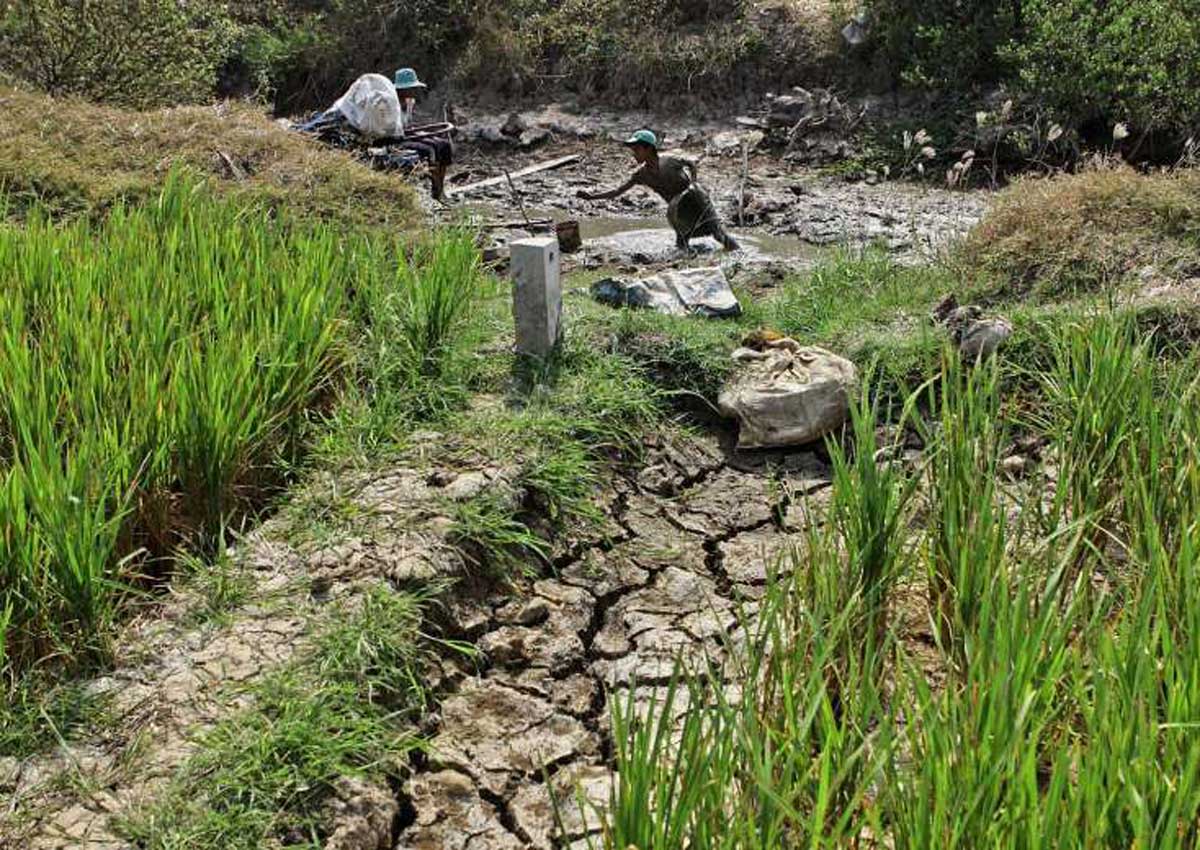Amid Thailand’s worst drought in decades, Prime Minister Prayut Chan-o-cha last week visited the north-eastern region grappling with parched farmlands and low water reserves.
Parts of the country are so dry that roads lining empty canals have collapsed. National park officials have built ponds to sustain wildlife, while irrigation officials are pumping water from the dregs of a dam.
Bangkok’s administrators last week announced they were cutting short April’s Songkran festival – which normally draws hundreds of thousands of tourists to one of the world’s biggest water fights.
But the brunt of the drought has been borne by farmers, who have been forced to put off dry season crops while the region is battered by unusually warm weather brought on by the El Nino phenomenon. Already, this climate cycle has taken its toll on the production of rice in Thailand, sugar in India, as well as palm oil in Malaysia, with no respite expected until the later part of the year.
Much of the drought is a “carry- over effect” from reduced rainfall during last year’s wet season, says Dr Anond Snidvongs, a climate change expert on Thailand’s national water policy committee. There was not enough rain to fill the reservoirs and tributaries that feed farmlands this time of the year.
Thailand, the world’s second largest rice exporter, registered a 4.6 million tonne or 14.5 per cent drop in paddy production in the current crop year compared to the previous year. A December report from the Office of Agricultural Economics shows paddy plantations have also shrunk by 10 per cent.
In Vietnam, rising salinity of water in the Mekong delta has already destroyed more than 200,000 tonnes of rice, reported Radio Free Asia. Water levels of the Mekong River are at their lowest since 1926, partly because of dams built upstream by countries like China and Laos.
In response to Vietnam’s request, China last Tuesday sped up the discharge of water from the Jinghong hydropower station in Yunnan province and said it would continue doing so until April 10.
In Malaysia, arid conditions have dented palm production. Statistics from the Malaysian Palm Oil Board show palm yields have slipped, while the output of crude palm oil was just 1.04 million tonnes in February, down from 1.12 million tonnes in the same period last year .
Meanwhile, India’s Department of Agriculture, Cooperation and Farmers Welfare expects sugar cane production in this current season to drop by 16 million tonnes. India is the world’s biggest producer of sugar cane after Brazil.
But while sugar cane-growing states face a rainfall shortage, other parts of India have been hit by persistent rain and hail storms, cutting the country’s wheat crop by possibly 14 per cent, the Associated Chambers of Commerce and Industry of India has said.
This could lead to the world’s second largest wheat producer having to import the grain for the first time in 10 years, said the industry body.
Some other Asian countries are faring better. Indonesia’s production of milled rice last year grew by 6.4 per cent, and that of corn and soybean also rose.
The Agriculture Ministry’s secretary-general Hari Priyono attributes this to good preparation. “We anticipated its effects as early as 2014,” he told The Sunday Times.
“We also carried out various programmes to mitigate the effects in a massive way. For example, we rehabilitated irrigation networks, provided machines like tractors to farmers during the harvesting and post-harvesting period, and supplied a lot of water pumps so they could optimise available water sources during the extended drought.”
Such long-term planning is unfortunately uncommon, say agriculture experts. Dr Leocadio Sebastian, a Vietnam-based regional programme leader for the Consultative Group On International Agricultural Research, says governments tend to be reactive. “They tend to favour relief intervention.”
Despite the drop in global rice production, analysts do not expect prices to rise significantly because stockpiles have bloated in recent years. The Thai government, for example, was sitting on 12 million tonnes of rice last month, while Indonesia holds 1.6 million tonnes.
Palm oil prices will rise but be reined in by subdued import demand from China and the European Union, notes BMI Research firm in a report published this month.
Meanwhile, a good Brazilian sugar cane crop this season will moderate prices increases, says BMI’s head of commodities Aurelia Britsch.
The bigger impact for now will be felt in rural communities. Thai economist Witsanu Attavanich estimates the drought would cost the country 62 billion baht (S$2.4 billion) in damage.
In the Philippines, EL Nino has already wiped out at least 3.6 billion pesos (S$105 million) from agricultural production. And some farmers have taken to hunting or eating rats to survive.
tanhy@sph.com.sg
Additional reporting by Arlina Arshad and Raul Dancel

This article was first published on March 20, 2016.
Get a copy of The Straits Times or go to straitstimes.com for more stories.





